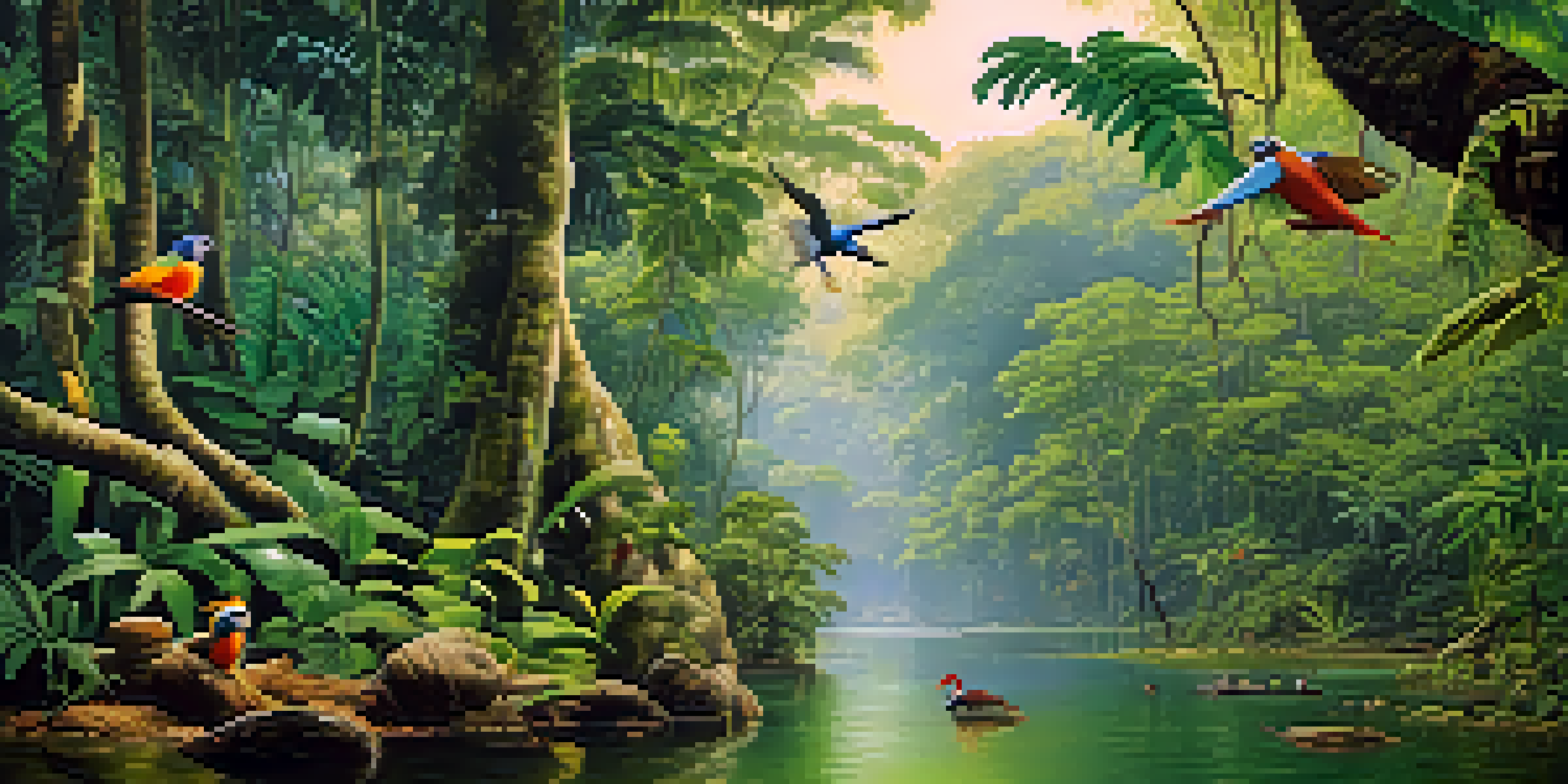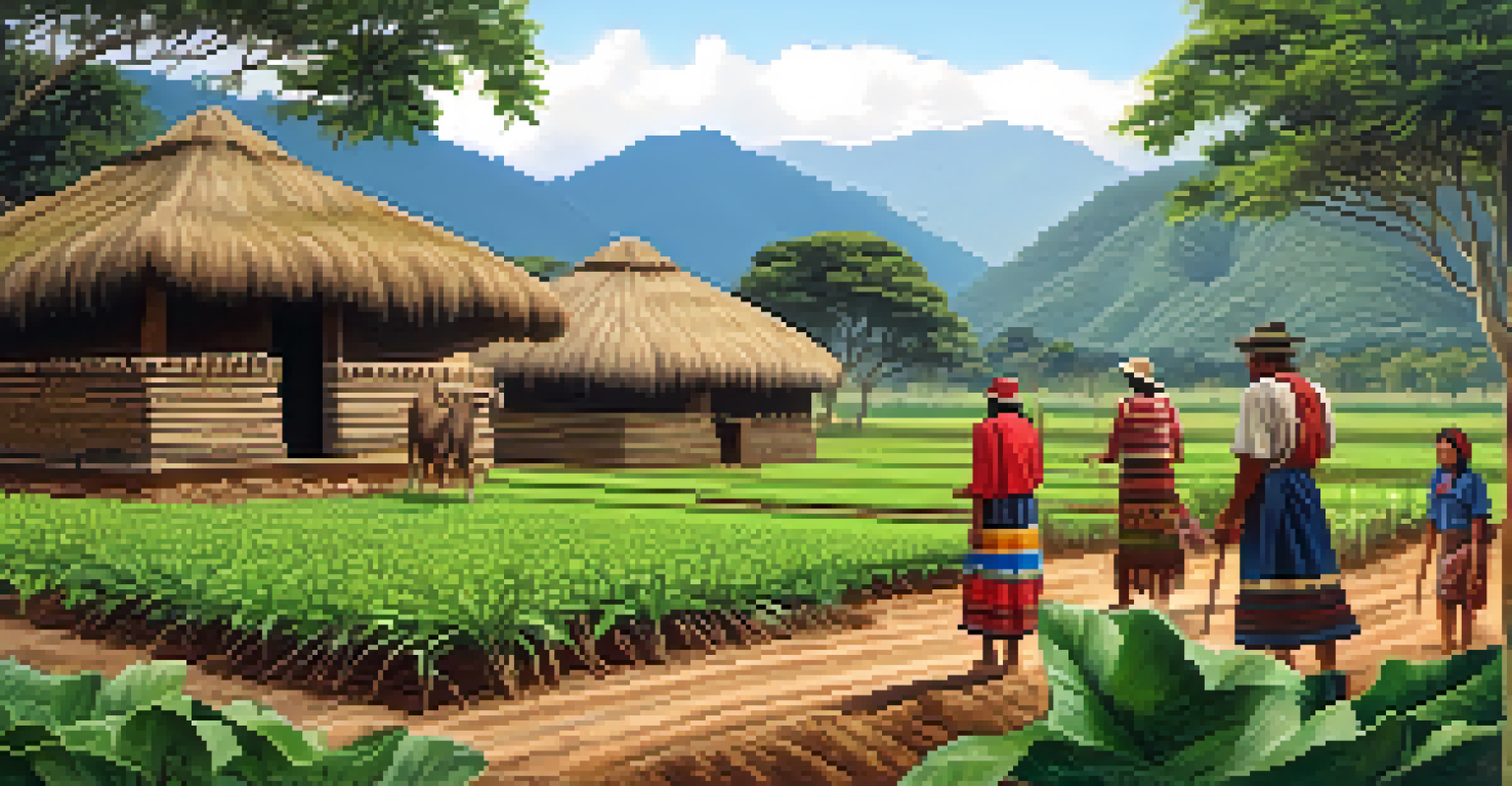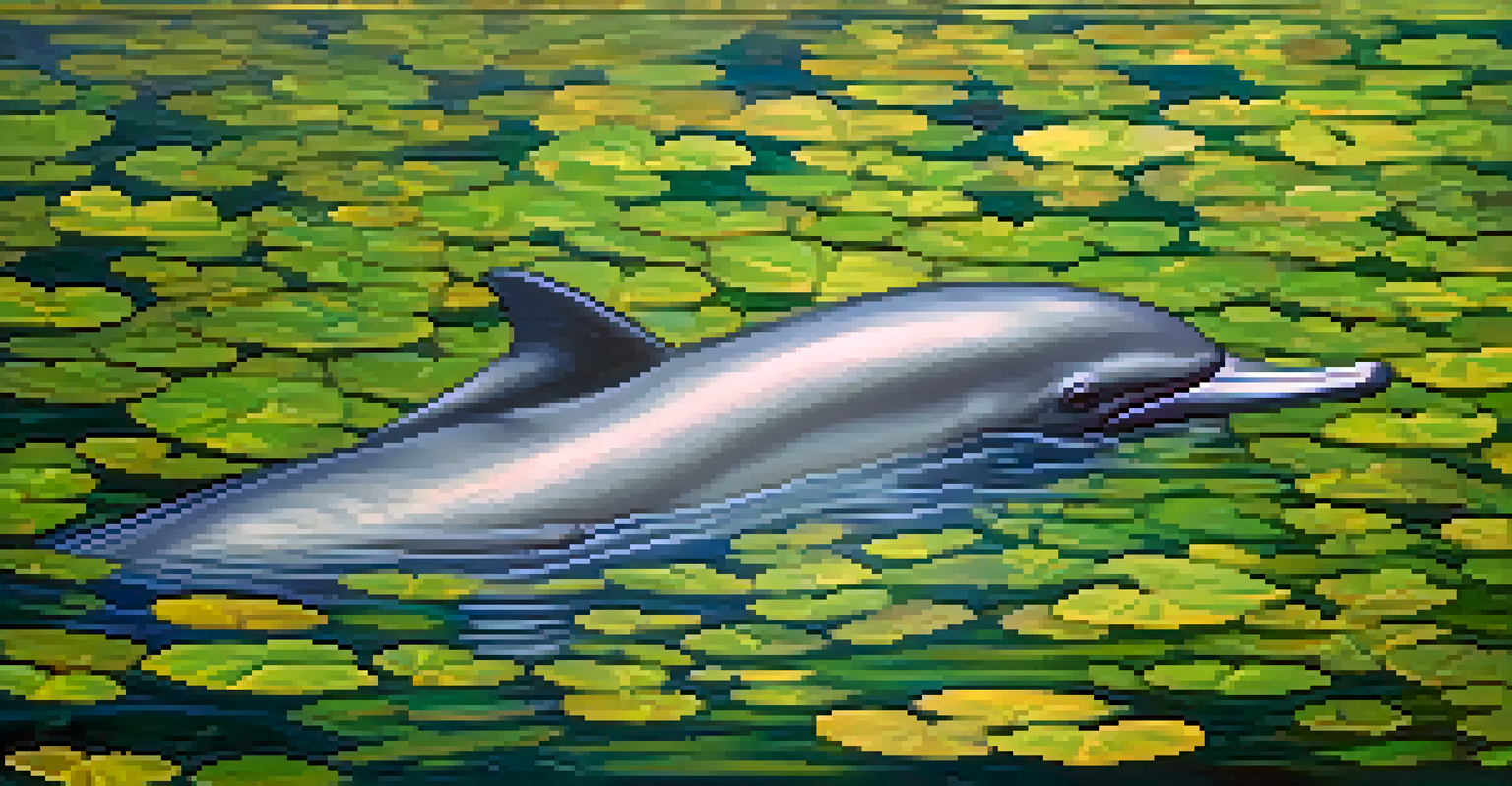The Impact of Deforestation on Peru's Wildlife Habitats

Understanding Deforestation in Peru's Unique Ecosystem
Deforestation in Peru is a pressing issue that affects not just trees, but the entire ecosystem. The country is home to the Amazon rainforest, a biodiversity hotspot teeming with wildlife. Unfortunately, illegal logging, agriculture, and mining are major contributors to tree loss, which disrupts habitats. When trees are cut down, the complex web of life that relies on them begins to unravel, leading to significant ecological consequences.
The earth does not belong to us: we belong to the earth.
As these forests are cleared, the delicate balance that supports countless species is thrown into chaos. Animals lose their homes and food sources, pushing some species towards extinction. For instance, the jaguar, which relies heavily on forest cover, finds it increasingly difficult to hunt and survive. The loss of trees affects not only the wildlife but also the indigenous communities that depend on these forests for their livelihoods.
While some may see deforestation as an avenue for economic growth, the long-term repercussions on wildlife habitats are alarming. To truly understand the impact, we need to consider not only the immediate loss of trees but also the cascading effects on the ecosystem. Each tree removed is a step closer to the loss of biodiversity and the rich cultural heritage tied to these forests.
Key Species Threatened by Habitat Loss
Peru's wildlife includes many unique and endangered species that face dire consequences due to habitat destruction. For example, the Amazon river dolphin, known for its distinctive pink color, is losing its habitat due to deforestation and pollution. As rivers become more polluted and their banks eroded by logging activities, these dolphins struggle to find food and safe breeding grounds.

Additionally, the Spectacled bear, South America's only bear species, is also severely impacted. With forests being cleared for agricultural land, these bears find it increasingly difficult to locate food and shelter. Their population is declining, and the fragmentation of habitats makes it harder for them to find mates, which is crucial for species survival.
Deforestation Threatens Biodiversity
The loss of trees in Peru's Amazon rainforest disrupts ecosystems, endangering unique species and indigenous communities.
These examples highlight the broader implications of deforestation, where the loss of a single species can ripple through the ecosystem. Every animal plays a role in maintaining the balance of its habitat, and the extinction of one can lead to unforeseen consequences for others. It's essential to recognize the interconnectedness of species within Peru's wildlife.
Deforestation's Effect on Biodiversity
Biodiversity in Peru is not just about the number of species; it's about the intricate relationships that exist among them. Deforestation disrupts these relationships, leading to a decline in overall biodiversity. As trees are removed, the plants and animals that depend on them for survival are also at risk, creating a domino effect throughout the ecosystem.
In nature's economy, the law of all for one and one for all takes on a new meaning; it is the essence of life.
For instance, many birds rely on specific tree species for nesting and feeding. If those trees are cut down, the birds either have to migrate to find new homes or face population decline. This loss of biodiversity can make the ecosystem more vulnerable to diseases and climate change, as diverse ecosystems tend to be more resilient.
Preserving biodiversity is crucial not only for the health of the environment but also for human well-being. Healthy ecosystems provide services like clean air, water, and even medicinal resources. Therefore, protecting Peru's biodiversity is essential for both wildlife and the communities that rely on these natural resources.
The Role of Indigenous Communities in Conservation
Indigenous communities play a vital role in the conservation of Peru's forests and wildlife. They possess traditional knowledge and practices that have enabled them to live sustainably within these ecosystems for generations. Their deep understanding of the land makes them invaluable partners in conservation efforts, as they know which areas are most critical for wildlife and how to manage resources sustainably.
However, these communities often face challenges from outside interests that prioritize short-term economic gain over long-term sustainability. Deforestation threatens their way of life, as their traditional lands are encroached upon for logging and agriculture. Supporting indigenous rights and practices can be a powerful tool in the fight against deforestation, as these communities often have the most at stake.
Indigenous Knowledge Aids Conservation
Indigenous communities possess vital traditional knowledge that is essential for sustainable resource management and habitat protection.
By collaborating with indigenous groups, conservationists can develop strategies that protect both wildlife and the cultures that depend on these ecosystems. This partnership not only empowers local communities but also enhances the effectiveness of conservation initiatives, ensuring a more sustainable future for both people and wildlife.
Restoration Efforts: Rebuilding Wildlife Habitats
Amid the challenges posed by deforestation, various restoration efforts are underway to revive Peru's wildlife habitats. Reforestation projects aim to plant native trees and restore degraded lands, providing much-needed relief to struggling ecosystems. These initiatives not only help to restore habitats but also promote biodiversity by creating corridors for wildlife movement.
Organizations and local communities are increasingly collaborating to implement these projects, focusing on areas most affected by deforestation. By selecting native species for replanting, these efforts ensure that the restored areas can support the original wildlife that inhabited them. This approach fosters a sense of ownership among local communities, encouraging them to protect these restored areas.
While restoration is a crucial step, it is equally important to address the root causes of deforestation. Combining restoration with sustainable land management practices can create a holistic approach that benefits both wildlife and human populations. The journey to rebuild wildlife habitats is challenging, but with collective effort, hope for a greener future remains.
Policy Changes and Their Impact on Wildlife Protection
Effective policies are critical for addressing deforestation and protecting wildlife habitats in Peru. Government regulations aimed at curbing illegal logging and promoting sustainable practices can make a significant difference. Enforcement of these policies, however, often faces challenges due to lack of resources and corruption, hindering their effectiveness.
Recent initiatives have focused on engaging local communities in conservation efforts, allowing them to take a more active role in protecting their environments. By involving those who live closest to the land, policies can be tailored to meet the specific needs of both wildlife and human populations. This collaboration is essential for achieving sustainable outcomes and ensuring the survival of endangered species.
Restoration Efforts Are Vital
Reforestation and habitat restoration projects are crucial for rebuilding wildlife habitats and promoting biodiversity in Peru.
Moreover, international cooperation and funding can support these policy changes, providing resources for monitoring and enforcement. By building a network of stakeholders dedicated to wildlife protection, Peru can create a more resilient approach to combatting deforestation. The path forward requires commitment from all levels of society, from local communities to global partners.
The Future of Peru's Wildlife Habitats: A Call to Action
The future of Peru's wildlife habitats hangs in the balance, and immediate action is necessary to prevent further degradation. Raising awareness about the importance of protecting these ecosystems is crucial for mobilizing support at both local and global levels. Each individual can play a role, whether through responsible consumer choices or supporting conservation organizations.
Moreover, fostering a sense of responsibility towards the environment can inspire future generations to take part in conservation efforts. Education about the significance of biodiversity and the threats it faces will empower young people to advocate for change. By instilling these values early on, we can cultivate a society that prioritizes environmental stewardship.

In conclusion, the impact of deforestation on Peru's wildlife habitats is profound and far-reaching. However, with collective efforts, we can pave the way for a sustainable future where both wildlife and human communities thrive. It's time to take action, protect our planet, and ensure that Peru's rich biodiversity continues to flourish for generations to come.